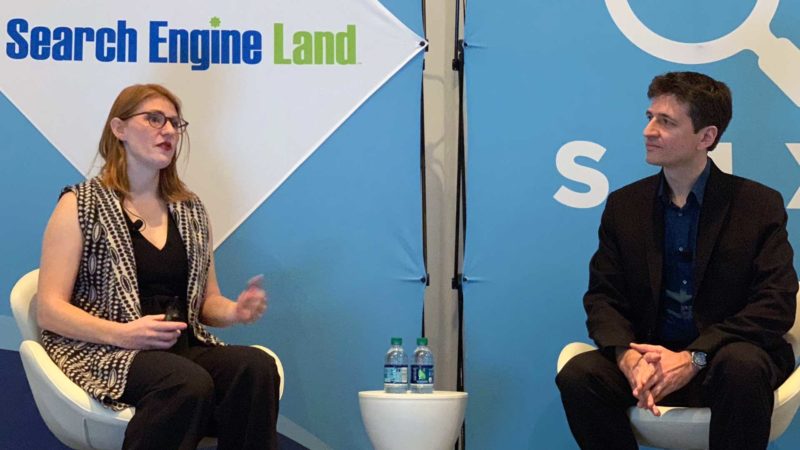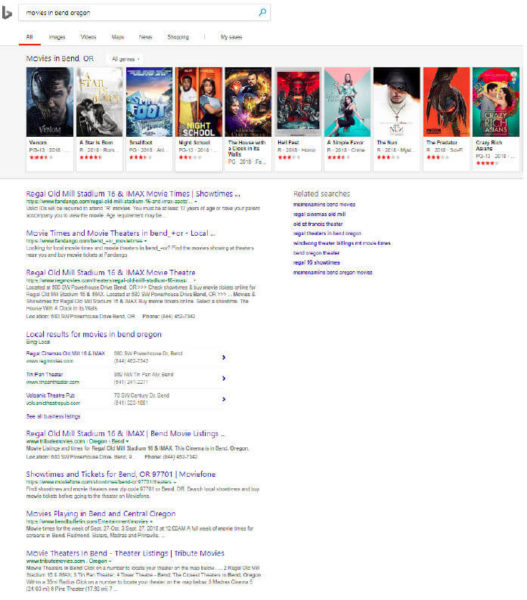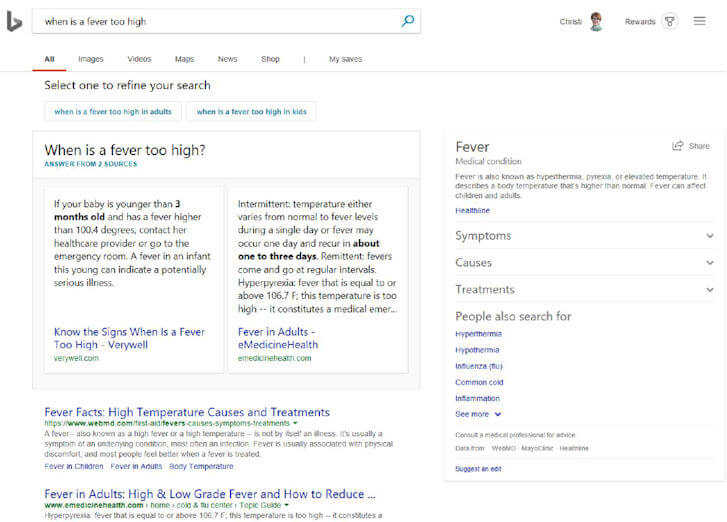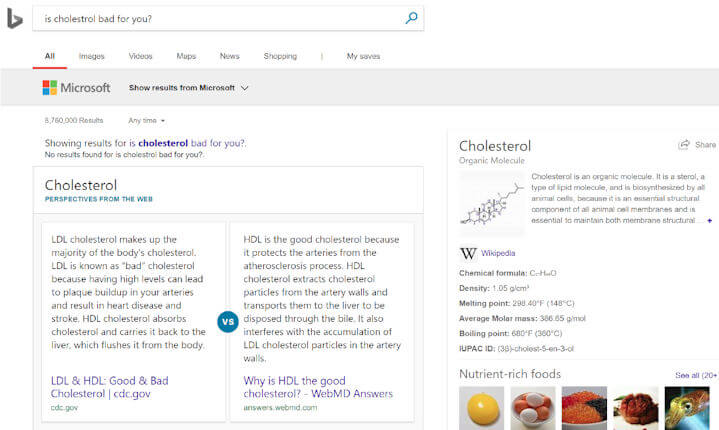 The first SEO-related keynote at SMX East this week came from the Bing team and was entitled, “The Quest for Intelligent Search.” Featuring Christi Olson and Frederic Dubut, the presentation contained many insights into the core areas that search engines are investing in to make search better.
The first SEO-related keynote at SMX East this week came from the Bing team and was entitled, “The Quest for Intelligent Search.” Featuring Christi Olson and Frederic Dubut, the presentation contained many insights into the core areas that search engines are investing in to make search better.
Christi and Frederic discussed the topics interactively, and the initial discussion focused on the shifts and changes that Bing has made in many areas of search.
When considering search, you might think that the goals for a search engine are:
- Discover and index everything
- Create (expand) a knowledge graph
- Super fast access to information
In fact, the way that Bing thinks about this is that the goal is to:
To back this concept up, Christi showed old search-result screenshots to show how search has evolved. Here is one from 2006 or earlier, when search results still consisted of just 10 blue links:
 Here is another example of that, but this one includes some advertising:
Here is another example of that, but this one includes some advertising:

Of course, search has evolved. Here is an example that includes search results other than just those blue links (what we call “blended search results”):

Finally, fast forward to today, and your results might look like this:

In this latest result, you now see two featured snippet-type responses. What’s intriguing about this one is that it provides multiple perspectives. Here is another example of a multi-perspective result offered by Bing:

Finally, here is a third example of a multi-perspective result, notable because it also provides a timeline of events:

This is an area where Bing has pushed hard in their technology. You might even find, for example, that your article that ranks for a query like “is coffee good for me” also ranks for the query “is coffee bad for me.” Often when users search for something, they really do want both perspectives.
Another area of innovation for Bing is in how they think about the nature of the information that they index. The knowledge graph is no longer enough — people want the graph of themselves too. Bing is integrated into Office 365, and it will index all of the information within your Office 365 environment, and make that much easier to find.
To test this, use your search bar to search your OneDrive and your hard drive at the same time. You can think of this as your personalized knowledge graph.
[related-posts section_title=”More insights from SMX” top_post_title=”Check out the SMX West 2019 agenda and sign up now for lowest rates” top_post_url=”https://marketinglandevents.com/smx/west/agenda-at-a-glance/?source=ml&utm_medium=newspost&utm_campaign=smx-west” sel_ids=”307000,306978,307302,307075,307096,307052,307480,307286,306987,307890″ ml_ids=“250837,251959″ post_list_limit=”3″]
Bing is also pushing to make it easier to search through images. For example, two years ago, Bing released functionality that allows you to shop within image search:

This capability is driven by data feeds, so implementing schema is important in order to appear here. This functionality also includes showing related images in a people-who-like-this-also-like-this-type format.
Another area of innovation is the concept of fact-checking, as shown by this screenshot:

This functionality is dependent on Schema ClaimReview markup to provide context to show if it has been fact-checked. In the example screenshot, the claims have been fact-checked by Snopes (and revealed to be false).
Bing also provides full support for AMP. Many people think of this as a Google-owned project, when it is, in fact, fully open source. Bing has its own viewer and its own AMP cache located at Bing-AMP.com.
The only thing you need to do to enable support is to allow Bingbot to fetch AMP content from your site, and to allow cross-origin-resource-sharing (CORS) to permit AMP content hosted on Bing-AMP.com to render resources hosted outside of Bing-AMP.com. Note that Bing’s support for AMP is currently limited to the U.S. only.
Bing also recently had to deal with an issue in their Webmaster Tools, because the URL submission form was broken. They removed the anonymous URL submission functionality because spammers loved it. As a first step, the Bing team switched to authenticated accounts, but spammers found ways around that too.
This triggered a throttling of how fast they could process URLs, and resulted in a slow down in the processing of legitimate submissions. That is fully resolved now. Nonetheless, they are continuing to work hard to fight spammers and slow them down going forward. This will likely result in tweaking the number of URLs that can be submitted through the URL submission form sometime soon.
Before SMX Advanced in June, the Bing team had received feedback from some webmasters that their sites had been getting hit too hard by the Bing crawler. This might include spending too much time crawling pages that were largely static or that were changing in minimal ways.
Bing worked on improving processes that can reduce crawling levels by as much as 40%. This is discussed in this post on the Bing blog that cites a Cornell University case study.
Many people ask about Bing’s support for JavaScript. This is something that Bing does support, in a similar way to Google. On a related note, Google recently deprecated support for the escaped fragment protocol, and,while Bing has not done so yet, Frederic tells us, “don’t use it.”
Ultimately, the search experience that Bing wants to provide us is:
- Intelligent
- Personalized
- Pervasive
- Predictive
- Conversational
The goal is to have the power of the internet everywhere we are. In time, the primary interface will be our voice, and we will be speaking with a digital assistant, though you may also be working with a companion screen, or even other formats.
Christi then shows us a video that captures this concept. In this video, Cortana (their personal assistant software) is engaging with a woman throughout her entire day, taking care of all of her needs, trying to stay one step ahead of her all along the way. Some of the key things it does include:
- Nails the music she wants every time.
- Identifies that there is a park near her next appointment, and gets her to bring her sneakers so she can run to help her meet her training goal.
- In her car, it offers her dynamic re-routing around heavy traffic to help her get to her destination and tells her how long any delays might be.
- The car also makes its own repair appointment and arranges to drive itself to that appointment.
- When she learns that she has just gotten a new emergency assignment, she lets the car drive itself so she can work on it during the drive home.
Contributing authors are invited to create content for Search Engine Land and are chosen for their expertise and contribution to the search community. Our contributors work under the oversight of the editorial staff and contributions are checked for quality and relevance to our readers. The opinions they express are their own.



